Bolivia is a country located in central South America. It can pride itself on a truly varied landscape: from the rainforest to the snow-capped peaks of the Andes passing through the Atacama desert. With completely different climates and scenarios, this country is rich in history and folklore.
Check out these amazing hotel deals!
- Save up to 30% on your hotel in Hawaii!
- Last-minute holiday hotel deals
- Top hotel deals for a new year trip
- Visiting Paris? Find the Best Deals & Reviews at TripAdvisor.
- Save 30% on hotels in Ocean City, Maryland...a TripAdvisor Top 10 Summer Destination!
- Save up to 30% on your hotel on your Winter Vacation!
- Find top-rated hotels at the lowest prices on TripAdvisor. Check rates now!
- Save up to 30% on hotels for a romantic getaway!!
For this reason, discovering the whole country through its cities can be a wonderful travel experience. It’s one of those trips everyone must do at least once in a lifetime.
Are you ready to go? Let’s check out the 10 main cities of Bolivia.
10. Cobija
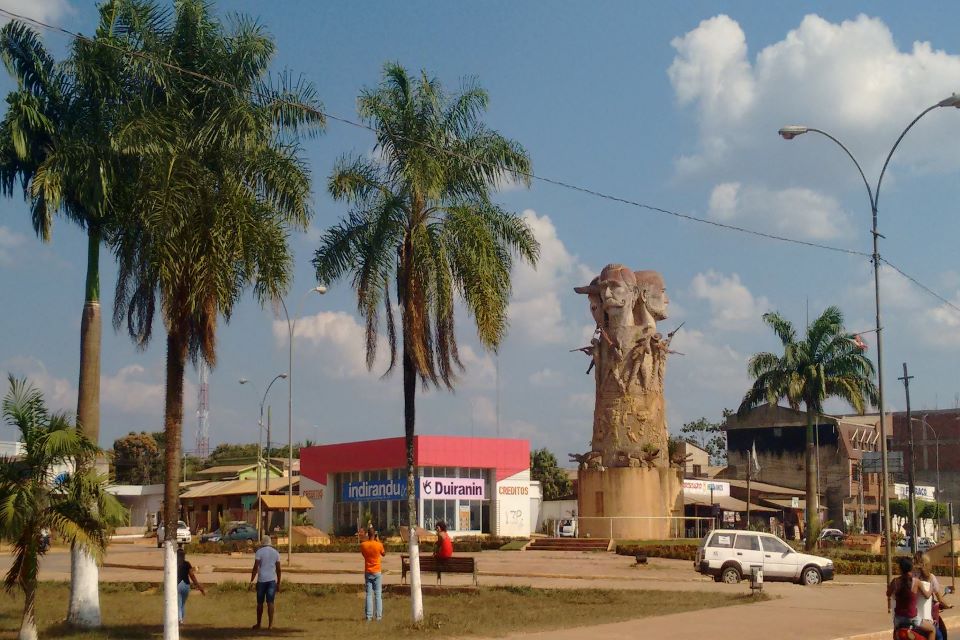
It is a city of 43,000 inhabitants located on the border with Brazil, on the banks of the Acre River in the Amazon basin. It is a university city, therefore particularly lively and full of young people. It was founded in 1906 with the name of Bahia, then changed to Cobija two years later in honor of the port on the Pacific Ocean passed to Chile during the war between Bolivia, Peru, and Chile. In the city, you can still find monuments in honor of the heroes of Bahia.
The monument of Carreton is also worth seeing. It was a method of travel once used in the region that used large carts pulled by oxen. Cobija has two airports and a single connecting road which, as often happens with cities in the Amazon rainforest, becomes impassable during the rainy season.
Best period: from June to August, since it’s the least humid and muggy period
Main attractions: the monument of the heroes of Bahia, the monument of Carreton
Low-cost flights: starting from €2,000
Accommodation: hotels and b&b from €35 per room
9. Trinidad

The full name of this city is La Santìsima Trinidad. It has almost 100,000 inhabitants and is located in the basin of the Amazon River, the capital of the Beni department, over 400 kilometers from La Paz. The climate here is tropical, typical of the rainforest.
Trinidad is very old, formed in 1600 around a Jesuit mission. It’s an important center of the agricultural market of Bolivia, with crops of cocoa, tobacco, cereals in its surroundings. The city offers many attractions for nature lovers, real reserves dedicated to the Amazon, parrots, and water sports on the shores of Lake Suarez.
Best time: from April to October to avoid the rainy season
Main attractions: Bolivian Conservation Parrots, Chuchini Amazon Wildlife Reserve, Lake Suarez
Low-cost flights: starting from €1,800
Accommodation: hotels and b&b from €38 per room
8. Tarija
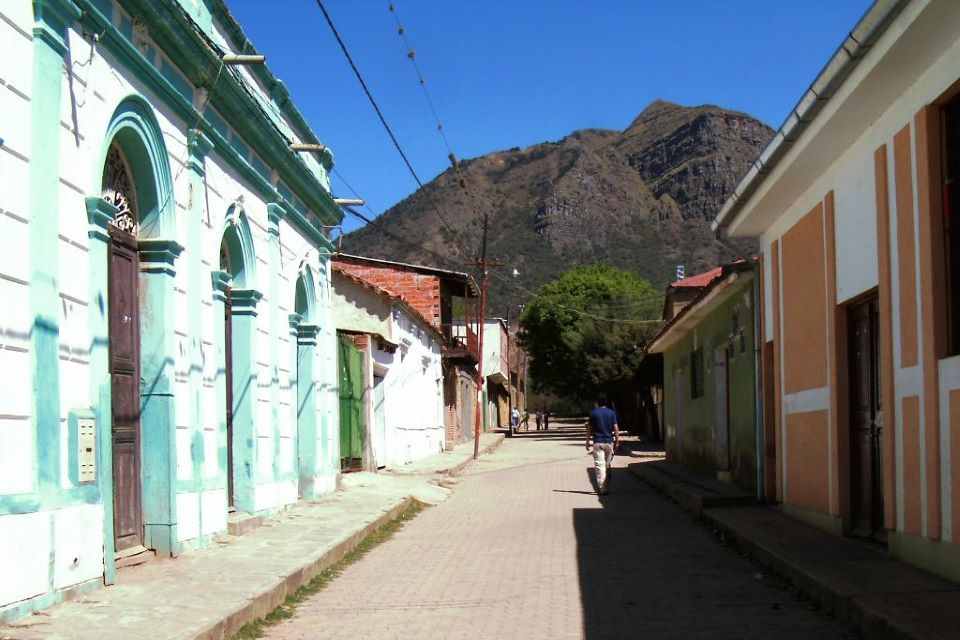
A city in the extreme south of Bolivia, Tarija owes its name to the Andalusian founder who arrived here in 1574. It has over 211,000 inhabitants and is very rich in attractions. In the south, the climate is more favorable. Around the city, there are large cultivations of wine and you can visit some wineries.
In the city, don’t miss the Luis de Fuentes Square; the splendid Mirador de Los Suenos, a long staircase that leads to a breathtaking view over the entire city; the Casa Dorada, an ancient palace of the last century in an eclectic style that houses the Museum of Culture; the Archaeological Museum, and many others. It’s a cultural and, at the same time, gastronomic and enological itinerary. And, oh, it’s a city full of interesting events.
Best time: from April to October to avoid the rainy season; the carnival is very famous, as is the Arts Fair in October and the Wine and Jam Fair in November
Main attractions: Paleontological and Archaeological Museum, Mirador de los Suenos, Casa Dorada
Low-cost flights: starting from €1,665
Accommodation: hotels and b&b from €35 per room
7 . Potosì
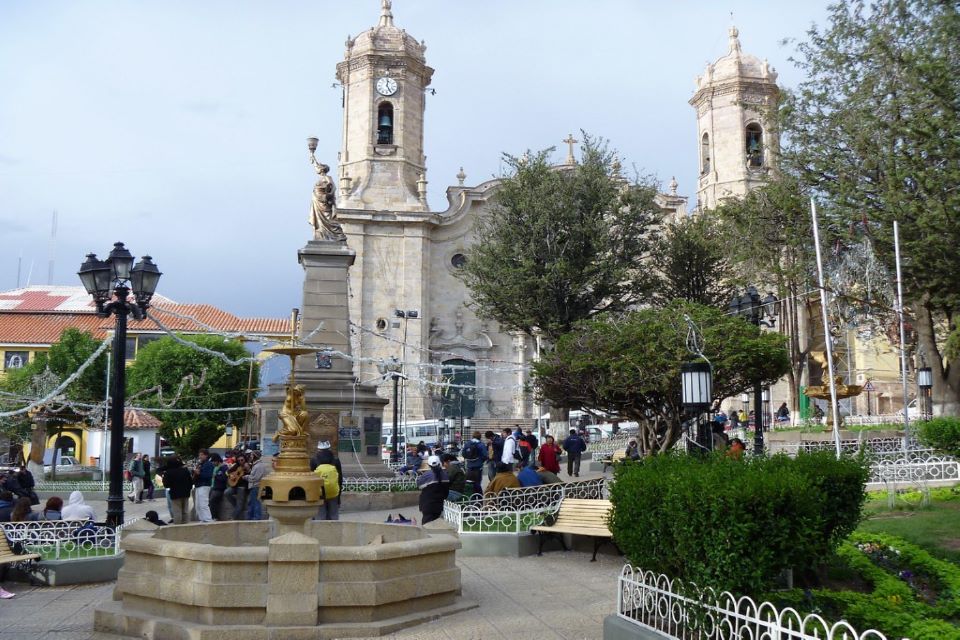
It is one of the highest cities in the world with an altitude of 4,090 meters. It has a population of 168,000 inhabitants and has been included in the UNESCO World Heritage List for its industrial manufactures, such as aqueducts and artificial lakes to supply water to the local silver mine, but also for the perfectly preserved architectural treasures: the Casa de la Moneda, the Iglesia di San Lorenzo, and the whole historic center of great interest for the suggestive colonial style.
The city was founded in 1545 as a mining town and it soon became a very rich place. It was so rich that there is still a saying in Spanish “vale un Potosì” (eng. worth a Potosi). You can visit the rich mines left with organized tours. Moreover, Potosì is the right place to set out to discover the famous salt desert Salar de Uyuni.
Best time: in the summer and for the Urban Art Festival in December; avoid during the winter because the climate is rather harsh
Main attractions: San Lorenzo church, Casa de la Moneda, silver, gold, and tin mines
Low-cost flights: starting from €1,500
Accommodation: hotels and b&b from €35 per room
Recommended cards, tickets, and tours: Uyuni – a day tour to the salt flats
6. Oruro

Located near the shores of Lake Uru Uru, along the Andean ridge, the city takes its name from the ancient population dedicated to the production of ceramics. It is an ancient city, founded in 1585 with the name of San Miguel de Oruro.
There are many attractions to visit: the monument to the Virgen del Socavon, with the homonymous sanctuary, the February 10 square, the archaeological museum, and, for nature lovers, the nearby Sajama National Park.
This city, like many in Bolivia, is pretty high with a height of 3,700 meters above sea level. The most famous event is the carnival during which you can attend very old traditional dances.
Best time: from April to October to avoid the rainy season and in February for the Bolivian Carnival
Main attractions: Sanctuary and monument to the Virgen de Socavon, Sajama National Park, February 10 square
Low-cost flights: starting from €1,000
Accommodation: hotels and b&b from €40 per room
5. Sucre
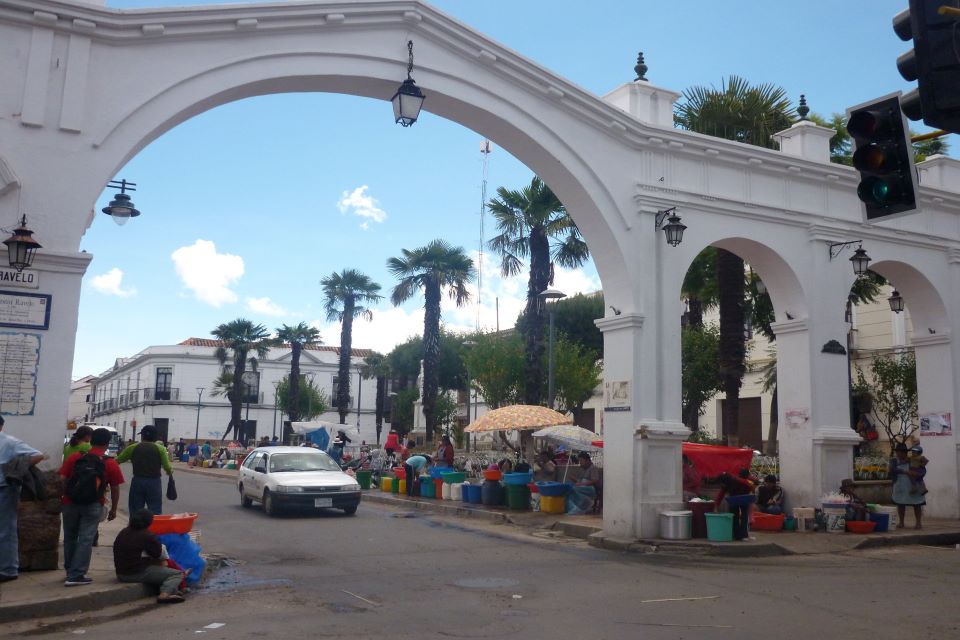
With its 306,000 inhabitants, the city of Sucre is one of the most famous in Bolivia, as well as the constitutional capital of the South American state. The city is very old and was included in the list of UNESCO World Heritage Sites in 1991 thanks to the perfectly preserved colonial buildings which attract thousands of tourists every year.
There are numerous museums and churches to visit in Sucre. The cultural and historical center of the city is constituted by the plaza 25 de Mayo, which overlooks the Cathedral and the Casa de la Libertad, very dear to the Bolivian people since the independence of Bolivia was declared here in 1825.
Best time: mid-September for the festival of the Virgen de Guadaloupe, which is full of dance and music
Main attractions: Liberty House, May 25 square, Museum of indigenous arts, University Museum
Low-cost flights: starting from €844
Accommodation: hotels and b&b from €50 per room
4. Santa Cruz de la Sierra
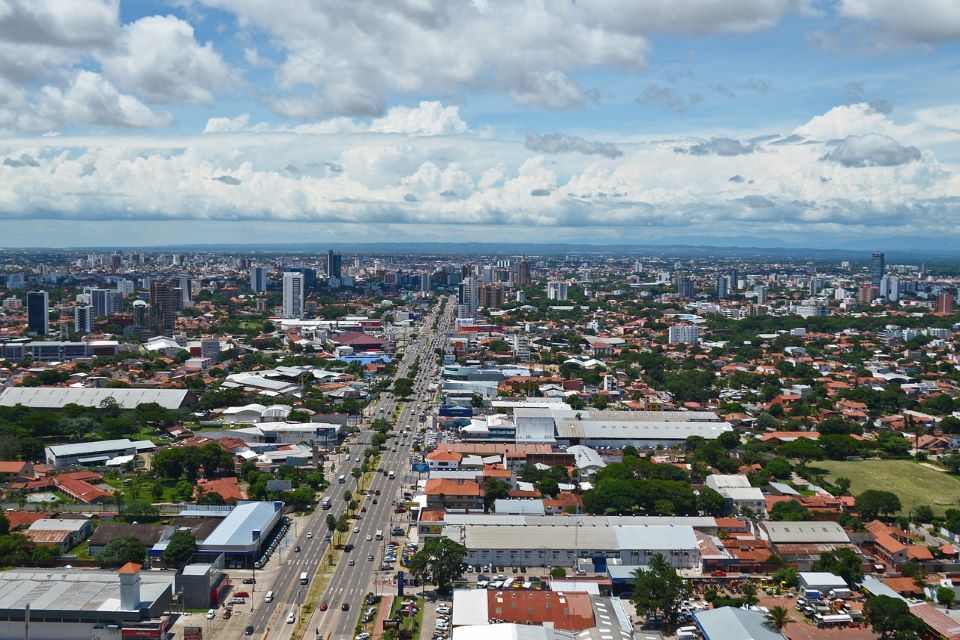
With over 2 million inhabitants, Santa Cruz is the most populous city in Bolivia. Unlike some of the Bolivian cities, this one isn’t particularly high: it is located only 400 meters above sea level, which actually differs it from other Bolivian cities. Also, there’s a climate difference, with the climate being milder.
The city is in great turmoil and is now the new economic center of Bolivia as can be seen from the modern skyline, which doesn’t exist in the other locations. Santa Cruz is now particularly efficient from the point of view of connections, public transport, telecommunications, and is home to most of the foreign companies in Bolivia. Some of the places worth visiting are the Church of San Lorenzo and the zoological garden.
Best period: from April to October; it’s better to avoid winter because of sudden winds coming from the Argentine pampas, which can bring the temperature down by 15°
Main attractions: the skyline, church of San Lorenzo, zoological garden
Low-cost flights: starting from €632
Accommodation: hotels and b&b from €60 per room
3. El Alto

Located near La Paz, it is the second-most populous city in Bolivia with its 960,000 inhabitants and, together with the capital, constitutes the most populated nucleus of the country. Unfortunately, the economic growth doesn’t go hand in hand with that of the population: El Alto is one of the poorest cities in Bolivia. But, that doesn’t mean that there’s nothing to see there.
You can take the La Paz-El Alto cable car as it’s a very interesting experience. Inaugurated in 2014, the cable car connects the two cities through a panoramic route. There is also an important airport and a very traditional city market on Thursdays, the largest one in Bolivia. And, let’s not forget that El Alto is famous for wrestling matches for which the citizens are crazy.
Although located quite high, El Alto isn’t very cold. But, you should watch out for the winds as they blow intensely throughout the year.
Best time: in winter, despite the cold, the climate is drier
Main attractions: El Alto Market, Juan Pablo II Avenue, cable car
Low-cost flights: starting from €750
Accommodation: hotels and b&b from €40 per room
Recommended cards, tickets, and tours: from La Paz – Andean architecture tour in El Alto
2. Cochabamba

With a population of 618,000, this city recalls the language of the ancient Quechua people who lived here with its name. It is the seat of the Union of South American Nations, an important political and diplomatic center. On the top of Cerro San Pedro, there is one of the tallest statues in the world: the Cristo de la Concordia. This 34 meters high statue is accessible by cableway, or, for the more daring, via a 1,399-step staircase.
The largest university in Bolivia is located in Cochabamba which also makes it an important cultural and youth center. The carnival period is also very popular here, with great celebrations and folkloristic shows. The climate is rather dry and the temperatures are mild throughout the year, despite the altitude of 2,500 meters.
Best time: during the Carnival
Main attractions: Cristo de la Concordia, Palacio Portales, Santa Teresa Convent Museum
Low-cost flights: starting from €866
Accommodation: hotels and b&b from €90 per room
1. La Paz
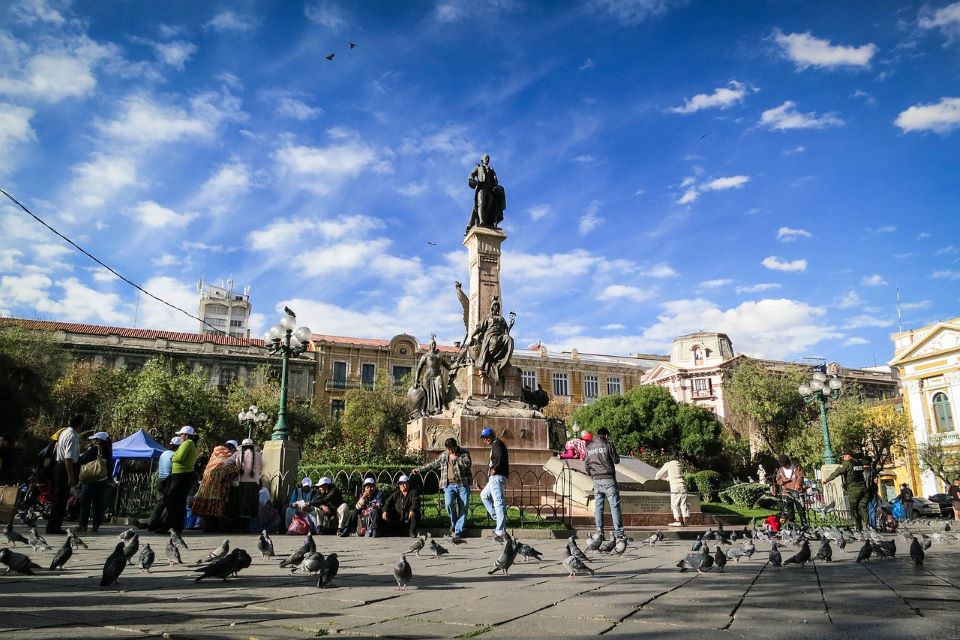
With its 3,640 meters above sea level, the capital of the government of Bolivia and the executive and legislative powers, La Paz is the highest metropolis in the world. It has a population of 841,000.
The city was born in a valley completely surrounded by mountains. Then, the population started growing and began to populate various altitudes. So, now, the city altitude ranges from 3,200 meters to 4,100 meters.
The panorama of La Paz is magical due to the presence of the snow-capped Illimani peak, visible from several points and El Alto. Places of particular interest are Murrillo Square and San Francisco Square. While La Paz is not very rich in historical monuments, it’s extremely interesting for the folklore, the meeting places, and the city markets with the Mercado de las Brujas (eng. Witches Market) being one of them.
La Paz varies from richer to poorer neighborhoods. The lower part of the city is richer and, as you go up, you find poorer neighborhoods, formed mostly by shacks.
Best time: May and June for the Festival del Gran Poder, when thousands of dancers in different types of costumes get on the streets of La Paz
Main attractions: Murrillo square, San Francisco square, Witches market
Low-cost flights: starting from €750
Accommodation: hotels and b&b from €50 per room
Recommended cards, tickets, and tours: Half-day walking tour of La Paz; La Paz cable car, cemetery, shaman, and El Alto tour.
Check out these amazing hotel deals!
- Save up to 30% on your hotel in Hawaii!
- Last-minute holiday hotel deals
- Top hotel deals for a new year trip
- Visiting Paris? Find the Best Deals & Reviews at TripAdvisor.
- Save 30% on hotels in Ocean City, Maryland...a TripAdvisor Top 10 Summer Destination!
- Save up to 30% on your hotel on your Winter Vacation!
- Find top-rated hotels at the lowest prices on TripAdvisor. Check rates now!
- Save up to 30% on hotels for a romantic getaway!!
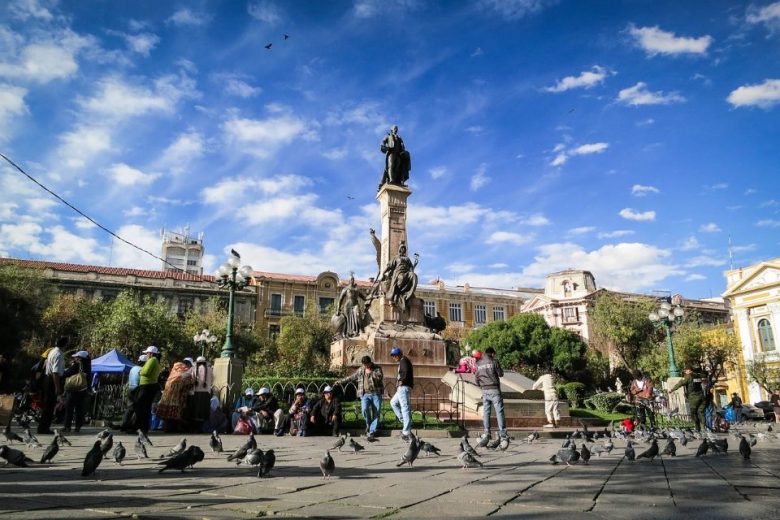





Find Us on Socials